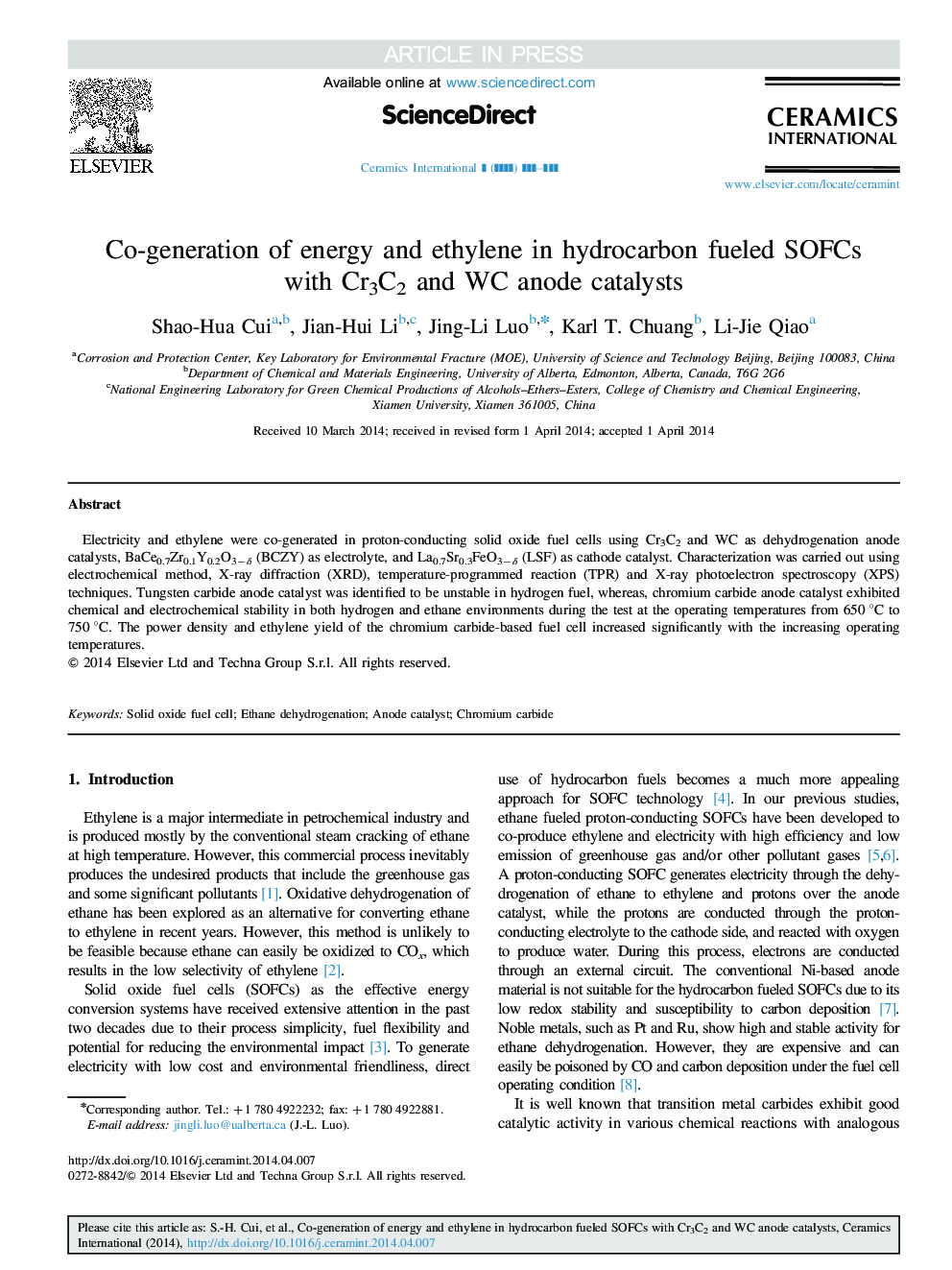| Article ID | Journal | Published Year | Pages | File Type |
|---|---|---|---|---|
| 10625431 | Ceramics International | 2014 | 6 Pages |
Abstract
Electricity and ethylene were co-generated in proton-conducting solid oxide fuel cells using Cr3C2 and WC as dehydrogenation anode catalysts, BaCe0.7Zr0.1Y0.2O3âδ (BCZY) as electrolyte, and La0.7Sr0.3FeO3âδ (LSF) as cathode catalyst. Characterization was carried out using electrochemical method, X-ray diffraction (XRD), temperature-programmed reaction (TPR) and X-ray photoelectron spectroscopy (XPS) techniques. Tungsten carbide anode catalyst was identified to be unstable in hydrogen fuel, whereas, chromium carbide anode catalyst exhibited chemical and electrochemical stability in both hydrogen and ethane environments during the test at the operating temperatures from 650 °C to 750 °C. The power density and ethylene yield of the chromium carbide-based fuel cell increased significantly with the increasing operating temperatures.
Related Topics
Physical Sciences and Engineering
Materials Science
Ceramics and Composites
Authors
Shao-Hua Cui, Jian-Hui Li, Jing-Li Luo, Karl T. Chuang, Li-Jie Qiao,
